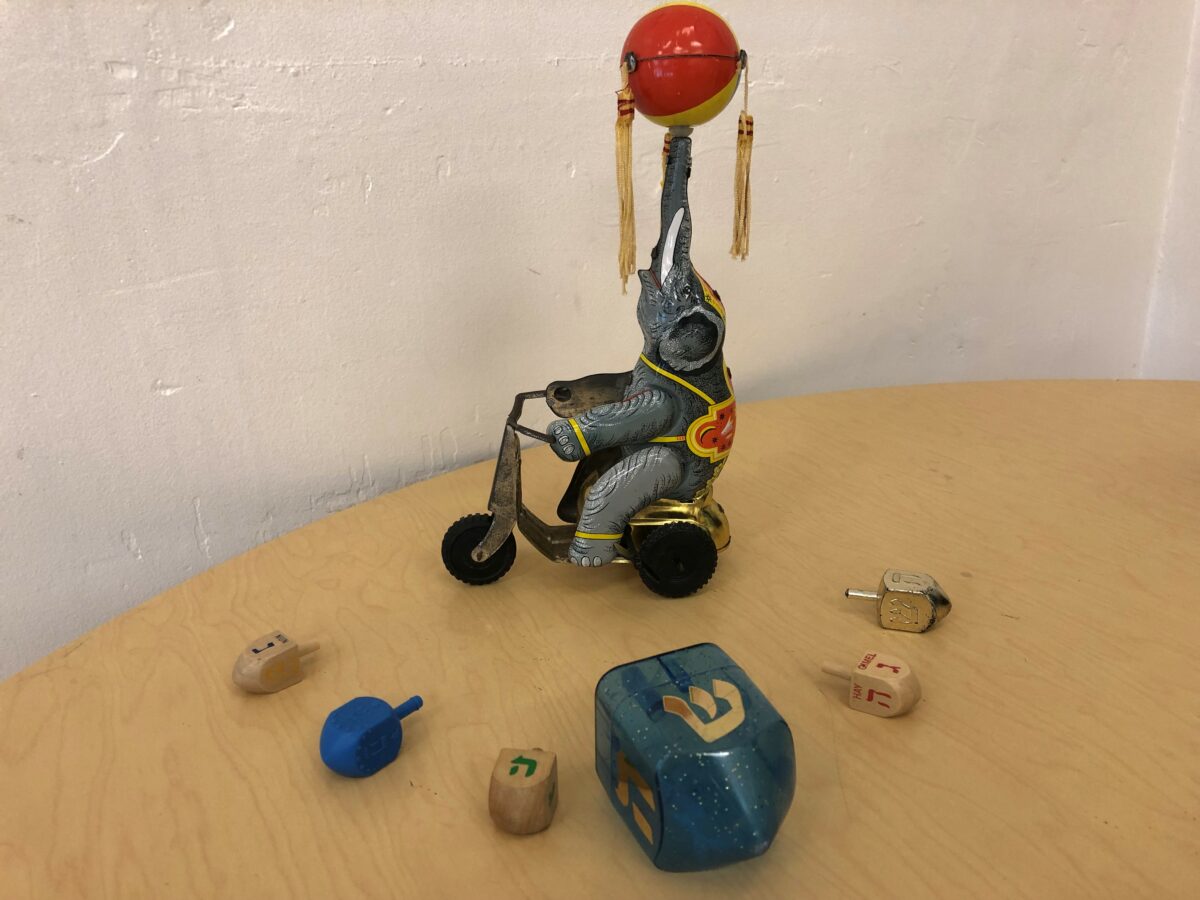
A Forgotten Rabbit Became a Beloved Friend
July 29, 2023Keeping Kids Engaged is Child’s Play
Who knew it could be so easy?
How do you keep a group of wiggly toddlers or preschoolers engaged?
Plan active songs that get them jumping and dancing? Use a flannel board to sing a favorite song?
Sure. But why work that hard?
Sometimes it’s nice to take the easy road.
In my music classes, I swear I could fill the whole half hour with two items:
A dreidel and a wind-up toy elephant.
I use both toys to demonstrate their movements in preparation for subsequent large-motor activities. The children observe the dreidel spinning so that they can then imitate it while we sing “I Have a Little Dreidel.”
And, since young children might never have seen a wind-up toy, I show them how the wind-up elephant works before we move like wind-up toys that fall down, out of energy, when they hear a musical cue.
I’ve done these activities for years, and every year, in every age group from toddlers to kindergartners, the response is the same:
“Again!”
These simple activities that I view as just preparation for the main event become the main event. I’m convinced I could save myself a lot of planning time and just repeatedly spin and wind these toys.
While the demonstration is simple, the benefits to the children are much deeper. Here are just a few of them:
- The kids can look at the toys and guess what might make them move. With the wind-up toy, for example, the kids often suggest pulling it backwards and letting it go, because some toys do indeed work that way.
- The kids can make predictions. In which direction will the wind-up toy go? How long will the dreidel spin? (This can also be a great way to include counting. With older children, I have two different dreidels, and the children predict which will spin longer.)
- The kids can see cause and effect. What happens when you spin and wind the toys? How do you make them go again when they stop?
- The children can watch a toy moving on its own, without batteries. This is a fascinating concept when so many items in the world need to be charged, plugged in, or switched on.
- The kids can think about history. To further extend the “no batteries” concept, kids can think about how various toys work, and how toys have developed over time. Could children who lived 100 years ago play on a smartphone? What about with a dreidel?
- The children can learn about cultures. A dreidel can spark discussion of the ways in which various cultures celebrate holidays. Some children might play with dreidels in their own homes, while others might have different family traditions.
- The children can fully focus their attention. The movement of the toys captivates them. They’re not thinking about what’s for lunch or what they played with earlier in the day. They’re absorbed in the now. Therefore, these are wonderful mindfulness activities.
The longer version of this activity, where we watch and then imitate the toys’ movements, hits all four Ms—movement, music, mindfulness, and make believe. They watch the toys (mindfulness), sing or listen to accompanying music, and pretend to be the toy by imitating its movement.
The wind-up toy activity can involve even more creativity, as the children can choose which type of wind-up toy they want to be, and move in that way. Robots and animals are popular choices.
Those are just a few of the many ideas that can sprout from a basic toy. We really don’t have to work so hard, and we don’t need to use an app, a video, or any other technology.
Sometimes the easy road is the best way to go.

